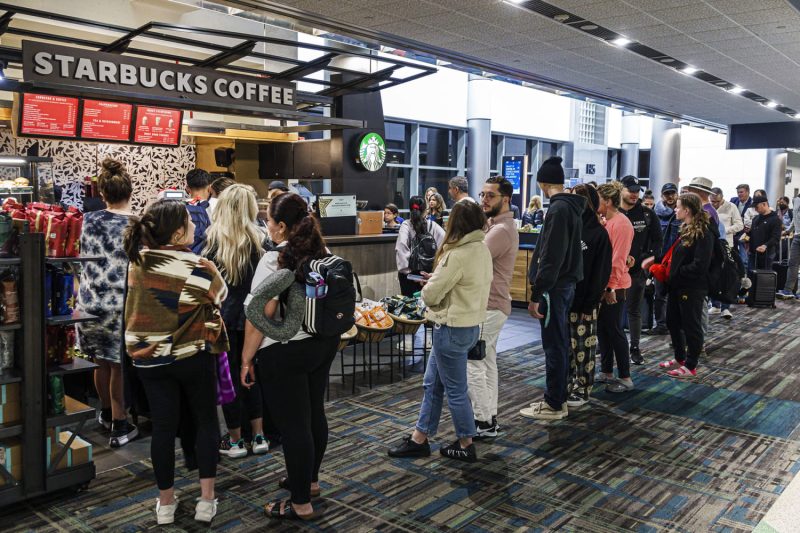In the bustling world of airport cafes, Starbucks stands out as a beacon of familiarity and comfort for travelers seeking a quick caffeine fix or a snack on the go. Yet, the unavoidable long lines often sour the experience for many customers, leading to frustration and dissatisfaction. Can Starbucks find a way to remedy these extended queues and elevate the customer experience at its airport cafes?
One approach that Starbucks could take to address the issue of long lines at its airport cafes is the implementation of mobile ordering and pickup options. By allowing customers to place their orders ahead of time via a mobile app and pick them up at a designated counter, Starbucks could significantly reduce wait times and streamline the ordering process. This technology-driven solution has already been successfully implemented at many of Starbucks’ traditional locations, and expanding it to airport cafes could greatly benefit time-pressed travelers.
Another potential strategy for Starbucks to tackle long lines at its airport cafes is to optimize its staffing and operational procedures. By closely monitoring customer traffic patterns and adjusting staffing levels accordingly, Starbucks can ensure that there are enough baristas available to efficiently serve customers during peak times. Additionally, the implementation of self-service kiosks or automated ordering systems could help alleviate congestion at the counter and expedite the ordering process.
Furthermore, Starbucks could explore the possibility of expanding its physical footprint within airports to accommodate the high volume of customers more effectively. By opening additional kiosks or satellite cafes in strategic locations throughout airport terminals, Starbucks could distribute the flow of customers more evenly and reduce congestion at its main cafes. This decentralized approach could also enhance convenience for travelers by providing them with more options for accessing their favorite Starbucks products.
In addition to operational enhancements, Starbucks could also leverage data analytics and customer feedback to gain insights into the root causes of long lines at its airport cafes. By analyzing customer preferences, purchasing behaviors, and wait times, Starbucks can identify opportunities for improvement and tailor its strategies to better meet the needs of travelers. Implementing a continuous feedback loop with customers could also foster a culture of responsiveness and innovation within the company.
In conclusion, while long lines at airport cafes may be a common challenge, Starbucks has the opportunity to proactively address this issue and enhance the overall customer experience at its airport locations. By leveraging technology, optimizing operations, expanding its physical footprint, and harnessing data insights, Starbucks can effectively reduce wait times, improve efficiency, and delight travelers with a seamless and convenient coffee experience. As Starbucks continues to evolve and innovate, the future of its airport cafes holds promise for a more pleasant and expedited customer journey.

